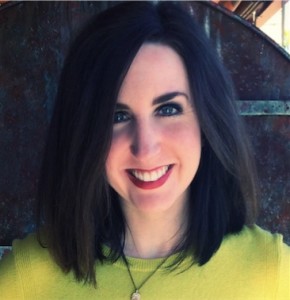- Calls to this hotline are currently being directed to Within Health, Fay or Eating Disorder Solutions
- Representatives are standing by 24/7 to help answer your questions
- All calls are confidential and HIPAA compliant
- There is no obligation or cost to call
- Eating Disorder Hope does not receive any commissions or fees dependent upon which provider you select
- Additional treatment providers are located on our directory or samhsa.gov
Joey Julius Shares His Battle with BED

Contributor: Courtney Howard, B.A., Director of Operations & Business Development at Eating Disorder Hope and Addiction Hope.
When struggling with an eating disorder, it can be difficult to share your story. The intense stigma and myths surrounding eating disorders often color the way the general public views these complex mental health conditions, which can lead to further shame and isolation among those struggling.
This past week, a collegiate athlete had the strength to challenge this stigma and share his battle with binge eating disorder (BED).
While this can be liberating and support his own recovery, it also encourages others to be open about their own struggles.
Joey Julius’ BED Recovery Story
Penn State kicker Joey Julius came forward with his past struggles with BED in a Facebook post on Monday, October 3rd. He states that he sought treatment during the spring and summer of 2016 for an eating disorder he had struggled with for close to 11 years.
In Julius’ Facebook post, he explains, “Due to my increase in not only weight but also depression and anxiety my team physicians started to notice not only a change in my overall happiness but also my performance as a normal human being.” Co-occurring anxiety and depression are common with eating disorders, including BED.
A cont ributing factor could also have been the media’s focus on Julius’ size since he started at Penn State, as the Binge Eating Disorder Association (BEDA) explains that risk factors for BED include “experiences of weight stigma, weight-related discrimination, or bullying.”
ributing factor could also have been the media’s focus on Julius’ size since he started at Penn State, as the Binge Eating Disorder Association (BEDA) explains that risk factors for BED include “experiences of weight stigma, weight-related discrimination, or bullying.”
Even since his story came out earlier this week, many media outlets have primarily focused on his weight and size instead of being sensitive to these potential triggers in light of his eating disorder. Julius’ decision to come forward with his story despite public scrutiny is a true sign of strength, and the eating disorder community stands behind him.
Males & Binge Eating Disorder
BED is characterized by binge episodes in which an individual consumes large quantities of food within a short period of time without the use of compensatory behaviors. Prior to its 2013 designation as a separate eating disorder diagnosis in the most recent version of the Diagnostic and Statistical Manual of Mental Disorders (DSM-5), it had been categorized under eating disorder not otherwise specified (EDNOS).
As the most common eating disorder in the United States, BED affects approximately 2 percent of males [1]. According to the National Eating Disorders Association (NEDA), as much as 40 percent of the population struggling with BED is male.
Despite the high prevalence of BED among men, the strong stigma facing the male population when it comes to mental health in general, but especially eating disorders, can keep people from seeking help. BED is often accompanied by high levels of shame, which is then compounded by the misperception of eating disorders as a “female issue.”
What Can We Do?
There are many things we can do to support males struggling with eating disorders. Fighting the stigma and changing the conversation surrounding BED and other eating disorders can encourage males who might be struggling to speak up and get the help they need.
 It is typical for men to eat more than women within the general population. This makes restriction easier to disguise for women and can make binge eating less difficult to detect in male friends or loved ones. A “boys will be boys” attitude can make BED and other disordered food behaviors fly under the radar.
It is typical for men to eat more than women within the general population. This makes restriction easier to disguise for women and can make binge eating less difficult to detect in male friends or loved ones. A “boys will be boys” attitude can make BED and other disordered food behaviors fly under the radar.
However, BED does not only affect an individual’s food behaviors. As with all other eating disorders, BED often co-occurs with other mental health disorders and can lead to social isolation. As Joey Julius shared in his Facebook post, it was his coaches and staff at Penn who noticed he was not himself, ultimately leading to his decision to seek treatment and choose recovery.
If you see disordered behaviors or other behavioral red flags in a male friend or family member, do not be afraid to raise your concern. It might be just the push he needs to gain the courage to seek help. Due to the myth that eating disorders only occur in females, some men might not even recognize that they are struggling with an eating disorder themselves.
Today, we can fight the stigma and raise awareness for eating disorders in males. Thanks to Joey Julius and others who have come forward with their stories, we can change the public perception and dialogue surrounding eating disorders.
Community Discussion – Share your thoughts here!
What words of encouragement do you have for Joey Julius and other men who share their eating disorder recovery stories?
 About the Author: Courtney Howard is the Director of Operations & Business Development at Eating Disorder Hope and Addiction Hope. She graduated summa cum laude with a B.A. from San Diego State University, holds a paralegal certificate in Family Law, and is a Certified Domestic Violence Advocate. After obtaining her certification as a life coach, Courtney launched Lionheart Eating Disorder Recovery Coaching in 2015 and continues to be a passionate advocate for awareness and recovery.
About the Author: Courtney Howard is the Director of Operations & Business Development at Eating Disorder Hope and Addiction Hope. She graduated summa cum laude with a B.A. from San Diego State University, holds a paralegal certificate in Family Law, and is a Certified Domestic Violence Advocate. After obtaining her certification as a life coach, Courtney launched Lionheart Eating Disorder Recovery Coaching in 2015 and continues to be a passionate advocate for awareness and recovery.
References:
[1]: Hudson, J.I., Hiripi, E., Pope, H.G. et al. (2007). The prevalence and correlates of eating disorders in the National Comorbidity Survey Replication. Biol.Psychiatry, 61, 348–358.The opinions and views of our guest contributors are shared to provide a broad perspective of eating disorders. These are not necessarily the views of Eating Disorder Hope, but an effort to offer discussion of various issues by different concerned individuals.
We at Eating Disorder Hope understand that eating disorders result from a combination of environmental and genetic factors. If you or a loved one are suffering from an eating disorder, please know that there is hope for you, and seek immediate professional help.
Last Updated & Reviewed By: Jacquelyn Ekern, MS, LPC on October 6, 2016
Published on EatingDisorderHope.com

The EatingDisorderHope.com editorial team comprises experienced writers, editors, and medical reviewers specializing in eating disorders, treatment, and mental and behavioral health.

